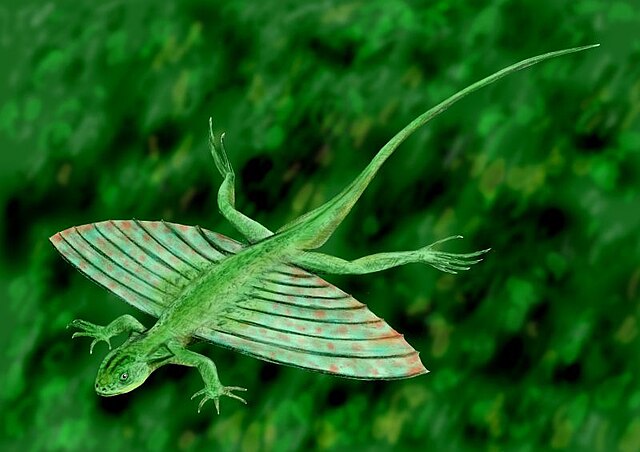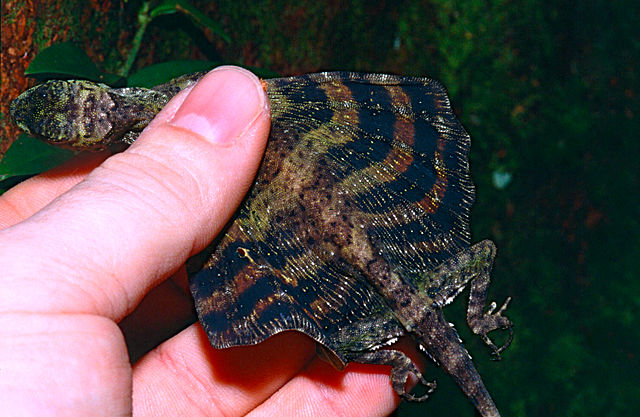Xianglong is a genus of Cretaceous lizard discovered in the Zhuanchengzi, near Yizhou, Yixian, Liaoning Province of China. It is known from LPM 000666, a single complete skeleton with skin impressions. The specimen comes from the Barremian-age Lower Cretaceous Yixian Formation, near Yizhou. The most notable feature about Xianglong is its bizarre oversized ribs, eight on each side, which were attached to a membrane of body tissue and allowed the lizard to glide. While in its original description it was considered to acrodont lizard, with a cladistic analysis in the same study suggesting that it was grouped with iguanians such as agamines, chamaeleonids, and leiolepidines, it was later shown that this was due to misinterpretation of the crushed skull, and its affinities with other lizards remains uncertain.
Xianglong
Draco is a genus of agamid lizards that are also known as flying lizards, flying dragons or gliding lizards. These lizards are capable of gliding flight via membranes that may be extended to create wings (patagia), formed by an enlarged set of ribs. They are arboreal insectivores.
Image: Draco taeniopterus Gunther, 1861 from Bulon
Image: Draco spilonotus
Size of D. quinquefasciatus in comparison to a human hand, from Sarawak, Malaysia
Highly camouflaged D. dussumieri from Bandipur National Park, India





